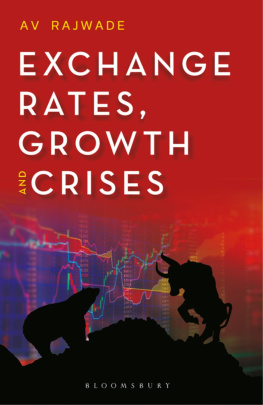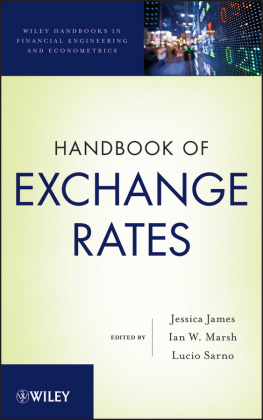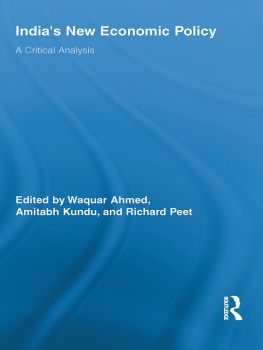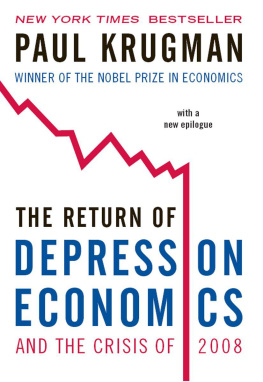Content

Exchange Rates, Growth and Crises
BS Books
Exchange Rates,
Growth and Crises
A Collection Of Articles
A V RAJWADE

First published in India 2017
2017 by A V Rajwade
All rights reserved. No part of this publication may be reproduced or transmitted in any form or by any means, electronic or mechanical, including photocopying, recording, or any information storage or retrieval system, without prior permission in writing from the publishers.
No responsibility for loss caused to any individual or organization acting on or refraining from action as a result of the material in this publication can be accepted by Bloomsbury or the author.
The content of this book is the sole expression and opinion of its author, and not of the publisher. The publisher in no manner is liable for any opinion or views expressed by the author. While best efforts have been made in preparing this book, the publisher makes no representations or warranties of any kind and assumes no liabilities of any kind with respect to the accuracy or completeness of the content and specifically disclaims any implied warranties of merchantability or fitness of use for a particular purpose.
The publisher believes that the content of this book does not violate any existing copyright/intellectual property of others in any manner whatsoever. However, in case any source has not been duly attributed, the publisher may be notified in writing for necessary action.
BLOOMSBURY and the Diana logo are trademarks of Bloomsbury Publishing Plc
E-ISBN 978 93 86643 35 3
2 4 6 8 10 9 7 5 3 1
Bloomsbury Publishing India Pvt. Ltd
DDA Complex, LSC Building No.4
Second Floor, Pocket C 6 & 7, Vasant Kunj
New Delhi 110070
www.bloomsbury.com

Business Standard Limited
Nehru House,
4, Bahadur Shah Zafar Marg,
New Delhi 110002
www.business-standard.com
Created by Manipal Digital Systems
To find out more about our authors and books visit www.bloomsbury.com.
Here you will find extracts, author interviews, details of forthcoming events and the option to sign up for our newsletters.
For readers of the financial newspapers, A V Rajwade has been a familiar by-line for many years, indeed a few decades. He has been read closely by policy-makers as well as by people in the financial markets and corporate world, and also by his former students from the Indian Institute of Management at Ahmedabad. As a sane voice on actively debated subjects, on which passing intellectual fashions have at times carried the day, Mr Rajwade has performed a valuable public service by consistently arguing a rational position, based on empirical evidenceeven if (indeed, especially when) it is not one in line with what has been advocated by financial traders.
This collection of old newspaper columns reflects his primary concerns with exchange rates, currency markets and capital market accountability, and amply bears out his description of himself as a half-believer in market efficiency. That half-belief has helped his understanding of world financial markets and have led him to warn of impending problems before they turned into crises. In 2007 he wrote of the financial crisis brewing in US financial markets, even though he did not anticipate the extent of the collateral global damage that would result. Very early on in the Greek crisis, in 2010, he asked the basic question that those in charge initially side-stepped because it was inconvenient: was the crisis was one of liquidity or solvency? And in the months ahead of the taper tantrum of 2013, when the rupee plunged sharply, Mr Rajwade was writing that the situation with regard to Indias external account (including large current account deficits) was unsustainable.
The issues that Mr Rajwade writes about are important, indeed vital, because much economic damage and human suffering has been caused by wrong financial policies, like defending an unsustainable exchange rateor for that matter by maintaining high exchange rates for long periods, as India has done. He correctly identifies a key lesson from the 2008 crisis, that the financial economy should sub-serve the real economy, not the other way round. And he dismisses the International Monetary Funds earlier belief in capital account convertibility as driven more by ideology than by empirical evidence. Indeed, he wonders whether its modified position today is a real change or only a cosmetic one. Elsewhere, he points out that the Reserve Banks hands-off policy on the rupees exchange rate (leaving it to the market) after a new governor took charge in 2008, was a serious error as it led to increasing current account deficits.
Not everyone will agree with these positions, but that is precisely the pointMr Rajwade is willing to argue his position, even if it is not a popular one in the financial world. Some of his other hobby-horses, like the contention that remittances should be treated as capital transfers, not current account transactions, have found virtually no takers in the policy-making world, but they do make you think. His larger point, that India faces the Dutch disease of excessive dollar inflows that take up the rupee to a level where it discourages exports (hence his plea for RBI intervention), is one that needs to be recognized as needing wider recognition.
The problem with collecting short pieces written over many years and putting them between two covers is that some repetition of common themes becomes unavoidable. Nevertheless, Mr Rajwade has done a service by putting together this compendium, with an exposition of core arguments that have stood the test of time.
T N Ninan, Chairman Business Standard
Looking back on four decades of financial journalism
When I left SBI in 1976 after coming back from a posting in London, I had not imagined that I would be contributing articles to premier business publications in India for the next 40 years: first, The Economic Times, then Business Standard, Mint and back to Business Standardwith occasional articles in the Economic and Political Weekly and other periodicals. The starting point was accidental, and the timing fortuitous. The currency market was just becoming more active in the floating rate era and during my stay in London, I had developed an interest in it, particularly thanks to the Financial Times (FT). Back in India, while I had taken a job in a company after leaving SBI, I was missing the FT.
As it so happened, the partner of a firm of brokers, well known in the Mumbai foreign exchange market, came to me to talk about producing a weekly bulletin on currency markets. The bulletin was meant for the firms clients. I was only too happy to accept the offer as it meant daily access to the FT. The format of the bulletin was simple: a commentary on exchange rate changes during the week accompanied by a table that tracked the change and an article on a topical issue.
At that time, there was very little coverage of the currency market in Indian media. The Economic Times was the only business daily doing that. Dr Hannan Ezekiel, ex-IMF economist and one of the authors of the special drawing rights (SDRs) scheme, was the then editor. A couple of issues of the bulletin came to his notice and he sent across a request for a meeting. When we met, he suggested that I write a monthly report on the currency market for the newspaper. The title, World Money, was coined by him. After a few months, he felt that it needed to be converted into a weekly report and so it all began.









